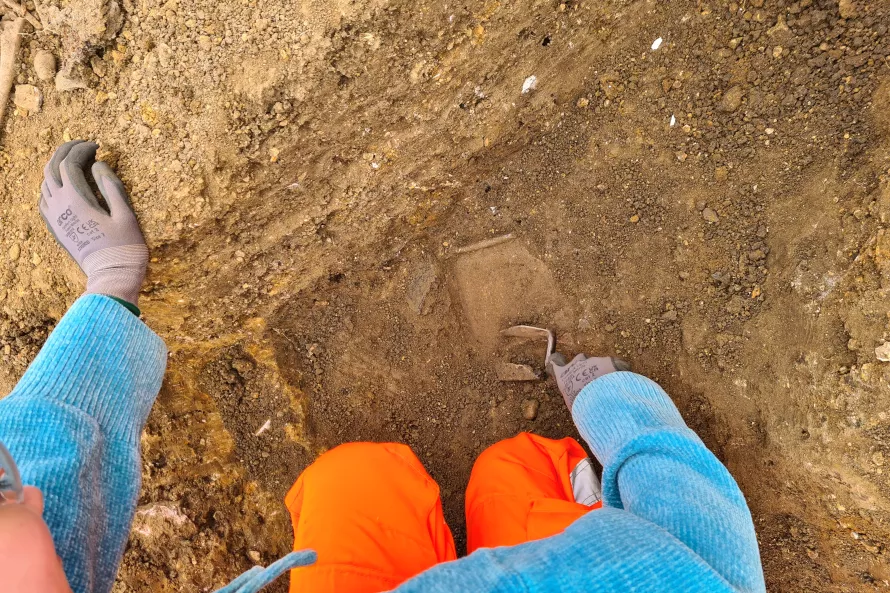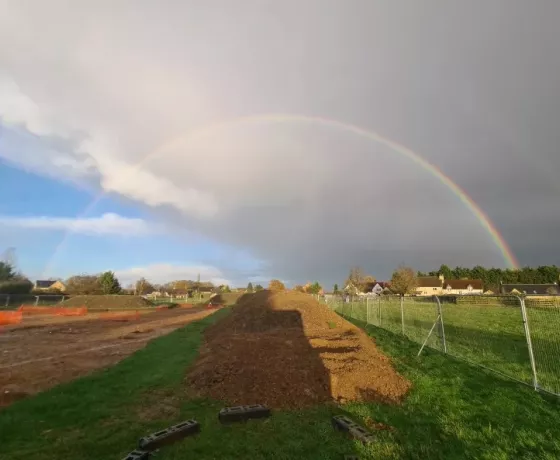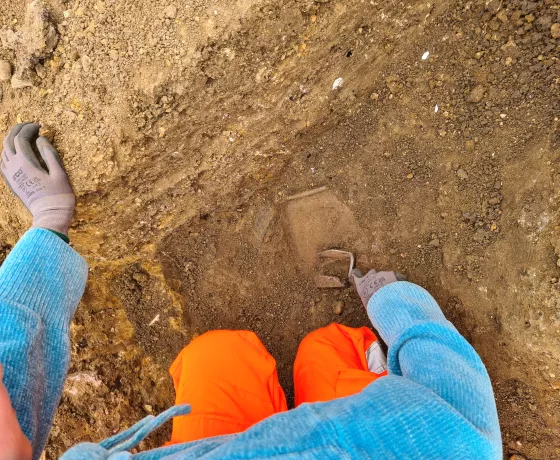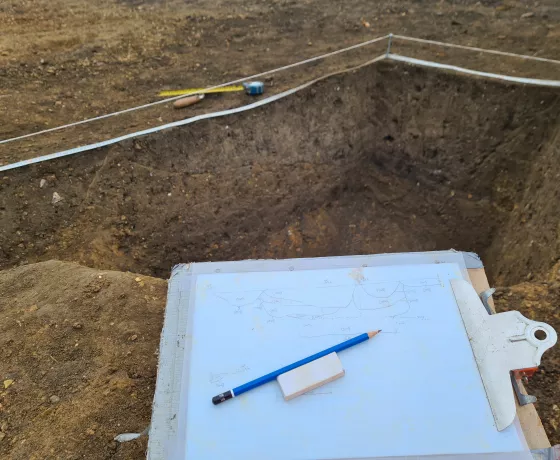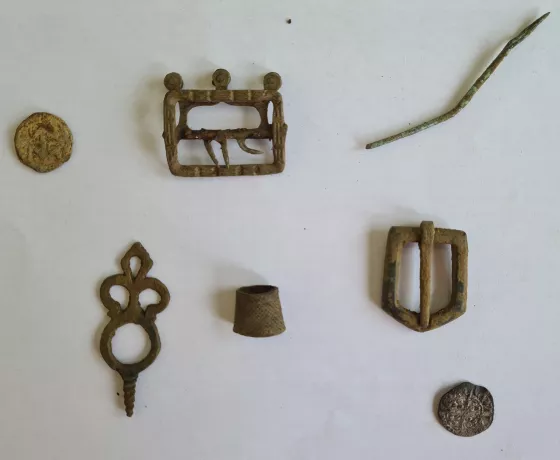Another week has come and gone here at Aston. Our archaeologists are working hard, battling against the conditions as we continue to investigate our site.
The features we have excavated so far have continued yielding ever more pottery and animal bone. For such a small site the quantity is astounding! However, these objects are not the only sources of information we can gather from the site. As we excavate features, we have a soil sampling strategy in place. The sampling method involves taking buckets of soil and wet-sieving the material through a finer and finer mesh. This process helps to save the smaller finds which can be invisible to the eye, such as seeds, wood charcoal, very small bird and fish bones, and more.
Our excavation plan is focused on looking in detail at specific features of interest, features that we hope can provide more insight into the past. Our aim is to gather enough information across the site as a whole and provide as much detail as we can to feed into the bigger picture, not only of the site but the wider region. While we will probably never know the names of the people who lived here in the medieval period, archaeology can tell us what they ate and grew, what sort of houses they lived in, how prosperous they were and numerous other details of their everyday lives. Comparing this site with others from the surrounding region can tell us much about the medieval economy and society that cannot be gained from reading historical documents from the time.
Other posts in this collection
Read our latest posts about the archaeological investigations at Aston.

